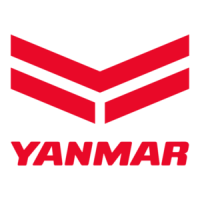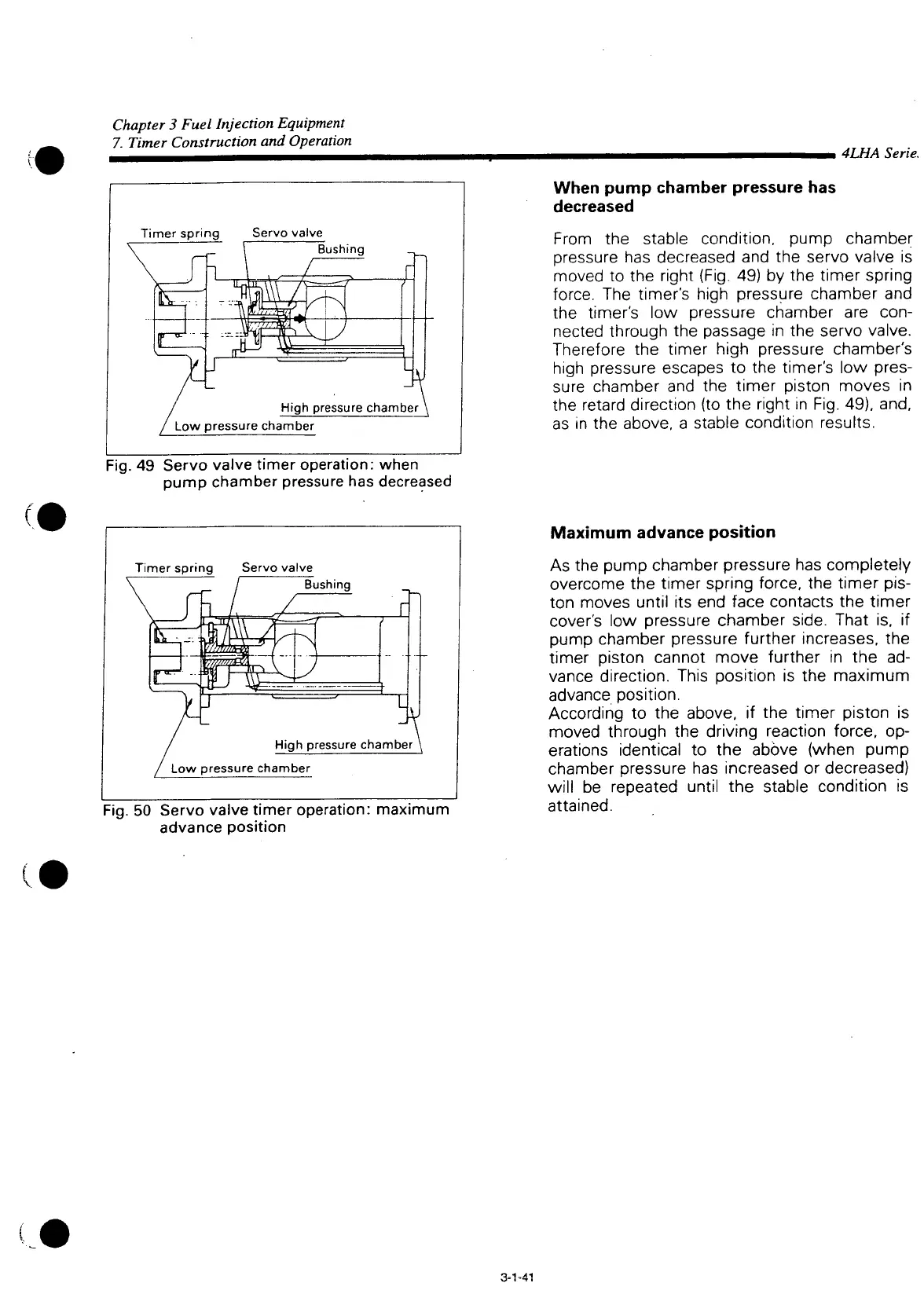Chapter 3 Fuel Injection Equipment
7. Timer Construction and Operation
4LHA Serie.
Timer spring Servo valve
Bushing
High pressure chamber
Low pressure chamber
Fig.
49 Servo valve timer operation: when
pump chamber pressure has decreased
When
pump
chamber
pressure
has
decreased
From the stable condition, pump chamber
pressure has decreased and the servo valve is
moved to the
right
(Fig. 49) by the timer spring
force. The timer's high pressure chamber and
the timer's low pressure chamber are
con-
nected through the passage in the servo valve.
Therefore the timer high pressure chamber's
high pressure
escapes
to the timer's low pres-
sure chamber and the timer piston moves in
the retard direction (to the
right
in Fig. 49), and,
as
in the above, a stable condition results.
Timer spring Servo valve
i / ./ r
¥'7/7jjfté&{
r -
J
' ' L
High pressure chamber
Low pressure chamber
Fig.
50 Servo valve timer operation: maximum
advance position
Maximum
advance
position
As
the pump chamber pressure has completely
overcome the timer spring force, the timer pis-
ton moves
until
its end face contacts the timer
cover's low pressure chamber
side.
That is, if
pump chamber pressure
further
increases, the
timer piston cannot move
further
in the ad-
vance direction. This position is the maximum
advance position.
According to the above, if the timer piston is
moved through the driving reaction force, op-
erations identical to the above (when pump
chamber pressure has increased or decreased)
will
be repeated
until
the stable condition is
attained.
3-1-41

